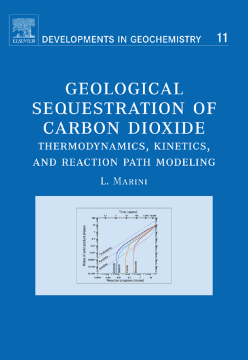
Additional Information
Book Details
Abstract
The contents of this monograph are two-scope. First, it intends to provide a synthetic but complete account of the thermodynamic and kinetic foundations on which the reaction path modeling of geological CO2 sequestration is based. In particular, a great effort is devoted to review the thermodynamic properties of CO2 and of the CO2-H2O system and the interactions in the aqueous solution, the thermodynamic stability of solid product phases (by means of several stability plots and activity plots), the volumes of carbonation reactions, and especially the kinetics of dissolution/precipitation reactions of silicates, oxides, hydroxides, and carbonates.
Second, it intends to show the reader how reaction path modeling of geological CO2 sequestration is carried out. To this purpose the well-known high-quality EQ3/6 software package is used. Setting up of computer simulations and obtained results are described in detail and used EQ3/6 input files are given to guide the reader step-by-step from the beginning to the end of these exercises.
Finally, some examples of reaction-path- and reaction-transport-modeling taken from the available literature are presented. The results of these simulations are of fundamental importance to evaluate the amounts of potentially sequestered CO2, and their evolution with time, as well as the time changes of all the other relevant geochemical parameters (e.g., amounts of solid reactants and products, composition of the aqueous phase, pH, redox potential, effects on aquifer porosity). In other words, in this way we are able to predict what occurs when CO2 is injected into a deep aquifer.
* Provides applications for investigating and predicting geological carbon dioxide sequestration
* Reviews the geochemical literature in the field
* Discusses the importance of geochemists in the multidisciplinary study of geological carbon dioxide sequestration
